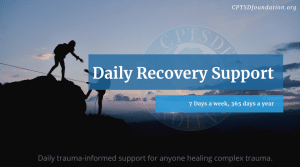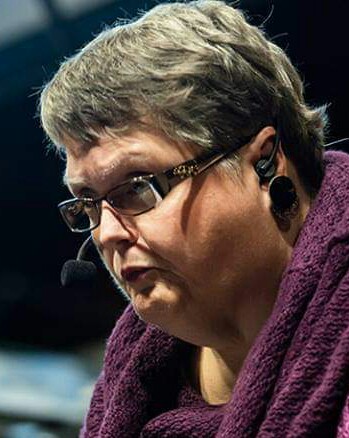The COVID-19 pandemic has been brutal on us all. Rising depression and anxiety plague our world more than any time in recent history, and it is not only adults who are affected. Children have been home from school living with adults who are out of work, out of money, and out of patience.
This article will discuss the increase in childhood sexual abuse during the pandemic explaining the underlying causes and some possible solutions.
Understanding the Problem

The Centers for Disease Control (CDC) report that at least 1 in 7 children has had the experience of being abused or neglected in 2018, well before the onset of the COVID pandemic.
There is a fear that as children are not exposed to mandated reporters of child abuse, these numbers have risen significantly (Campbell, 2022). This rise in child suffering is driven by parents coming under extra stress from the job and other losses. That is not an excuse for their behavior but an explanation.
It is well-known that many children were abused before the pandemic, especially among families who experienced economic instability before the onset of COVID (SAMSHA, 2020, The Alliance for Child Protection in Humanitarian Action, 2020.)
Child sexual abuse is believed to have increased significantly along with other forms of childhood maltreatment, and it has tremendous lifelong impacts on the health and wellbeing of the child if it is left untreated.
To sum it up, children are at a high risk of being sexually abused during COVID because adults are under a tremendous amount of stress, meaning, unfortunately, that they take their frustrations out on children.
Grooming: Gaining the Trust of Victims

Perpetrators of child sexual abuse during COVID-19 or anytime first must gain the trust of their victim and their caregivers (if they are not the caregivers) by grooming them. Grooming is the process that begins with identifying a victim, gaining their trust, and then tearing down their natural defenses.
Grooming tactics are often directed at children by first gaining the adults’ trust in the child’s life. These predators are often men and women well-known to the child and their parents, such as a cub scout leader or even a family doctor. After achieving trust, the perpetrator initiates contact with the child in a form that excites them, ranging from voyeurism to rape. Grooming helps the perpetrator gains access to the child and sets up a relationship grounded in secrecy.
Grooming a child leaves them hopelessly confused because they are told by their caregivers or the predators themselves that they are safe, yet they experience enormous amounts of pain and guilt, primarily if their body responds. This confusion, pain, and guilt are carried into adulthood and often keeps the victim living in the darkness of secrecy of what happened to them as a child.
Grooming steps include:
Identifying and targeting a victim. All children and teenagers are potential victims, with some predators being attracted to children with specific characteristics such as vulnerable parents who do not monitor their child’s Internet use.
Gaining trust and access to the child. The perpetrator will observe the child and identify their vulnerabilities to learn how to approach them. Perpetrators offer their victims special attention or a sympathetic shoulder to cry on about their woes to elicit a growing friendship with the child. The predator may play games or give rides to their potential victims and give them gifts.
Manipulation. The perpetrator manipulates the child into believing the relationship they have with them is so good that the only one who truly gets the child’s needs and meets them is the predator. A predator ay also uses the child’s empathy against them, convincing the child that they are the only one who understands the perpetrator to make sure the child believes the perpetrator “needs” the child.
Isolating. Luring the child into positions where they are alone with the perpetrator is the next step with keeping the child away from other children and other adults to molest their victims in secret.
Creating a womb of secrecy around the relationship. Perpetrators reinforce the special relationship with their victims by using private communications such as emails or text messages. This communication strengthens the child’s trust and secures secrecy from the child who does not wish to lose their “special relationship” with the predator. At this point, the perpetrator may use threats against their victim of hurting the child’s family or physical harm to the child. They may also state they will die by suicide if the child tells.
Initiating sexual contact. Having established a relationship and secrecy from the child, the perpetrator is ready to coerce their child to perform sexual acts.
The predator maintains control over their victim. Perpetrators rely on secrecy and their relationship with the child to remain safe from being caught for abusing their victims. One method used by predators is to tell the child if they tell, no one will believe them and use shame to keep their silence. Threats of physical violence against the child ensure they will keep the awful secret.
Online Predators and COVID-19
Children are not just in danger in their homes or from people they know; they are also in great danger from online predators who seek out lonely and bored children using the Internet.
The National Center for Missing and Exploited Children has stated that during the first nine months of 2020 and during the COVID-19 pandemic, it received 30,236 reports of possible “online enticement.” Online enticement is when someone communicates with a child online with the intent of engaging them in a sexual conversation, obtaining sexually explicit images, or setting up a meeting with the child. This rate is roughly double the reports of the previous four years.
With more and more children being forced to go online for school and then having enormous amounts of time on their hands, it is easy to see how and why sexual predators would find such children easy prey.
The only way to prevent a child from becoming a victim of online predators is not to allow children onto the Internet unless they are supervised and surfing the web or playing games in the open where their activities are monitored.
Preventing Childhood Sexual Abuse

Prevention of child sexual abuse depends on all of us working together. Every child you each of us contact in our lives is our responsibility, and if we see something that tells us that something isn’t right, the time is now to act.
Even if you are wrong, it is worth losing a friendship or acquaintance to know that you acted on your instincts because a child might be saved from a lifetime of misery.
Prevention begins at home. Watch carefully what and who your child is interacting with online. Keep abreast of their moodiness and watch for signs your child may have encountered a predator.
Talk about child sexual abuse, especially during COVID, to bring this horrific crime against children out into the light from the shadows because secrecy and shame are the predator’s best friends.
In Closing
During COVID, children have been exposed to more violence than in the past four years to all types of abuse. It is not far-fetched to believe that many children have experienced childhood sexual abuse during these unprecedented times.
Children do not become victims overnight but are groomed by their abusers to trust and obey their predator’s whims because they have no choice. Sexual abuse is never the fault of the child; it is always the fault of the perpetrator.
There are many resources available if one wishes to explore and reach out about childhood sexual abuse. Some of these include:
- A medical or mental health professional of your choice.
- RAINN (Rape, Abuse & Incest National Network) https://rainn.org
- Stop It Now! USA https://www.stopitnow.org/
- 1 in 6 https://1in6.org/
Sexual abuse of a child is never okay, even amid a pandemic. If you suspect a child is being abused in any form, please contact the National Domestic Violence Hotline at 1-800-789-SAFE (7233) or your local authorities right away.
“There is neither happiness nor misery in the world; there is only the comparison of one state with another, nothing more. He who has felt the deepest grief is best able to experience supreme happiness.” – Alexandre Dumas
References
Campbell A.M. An increasing risk of family violence during the COVID-19 pandemic: Strengthening community collaborations to save lives. Forensic Science International: Reports. 2020;2 DOI: 10.1016/j.fsir.2020.100089. Advance online publication.
Substance Abuse and Mental Health Services Administration (SAMHSA). (2020). Intimate partner violence and child abuse considerations during COVID-19.
The Alliance for Child Protection in Humanitarian Action. United Nations International Children’s Fund; 2020. Technical Note: Protection of Children during the Coronavirus Pandemic (v.2)

If you or a loved one live in the despair and isolation that comes with complex post-traumatic stress disorder, please, come to us for help. CPTSD Foundation offers a wide range of services, including:

- Daily Calls
- The Healing Book Club
- Support Groups
- Our Blog
- The Trauma-Informed Newsletter
- Daily Encouragement Texts
All our services are reasonably priced, and some are even free. So, to gain more insight into how complex post-traumatic stress disorder is altering your life and how you can overcome it, sign-up; we will be glad to help you. If you cannot afford to pay, go to www.cptsdfoundation.org/scholarship to apply for aid. We only wish to serve you.

My name is Shirley Davis and I am a freelance writer with over 40-years- experience writing short stories and poetry. Living as I do among the corn and bean fields of Illinois (USA), working from home using the Internet has become the best way to communicate with the world. My interests are wide and varied. I love any kind of science and read several research papers per week to satisfy my curiosity. I have earned an Associate Degree in Psychology and enjoy writing books on the subjects that most interest me.



